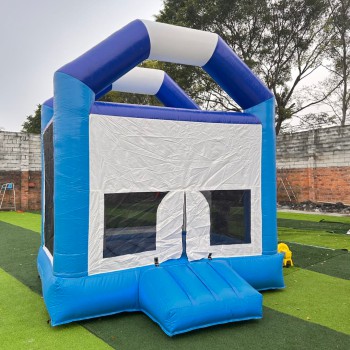Start Your Bounce House Rental Startup in 8/2025 for Fast Growth
Fairview
The inflatable rental industry presents a significant opportunity for entrepreneurs seeking a profitable and scalable business model. Launching a bounce house rental startup requires careful planning, from initial investment to operational execution. This guide provides a comprehensive roadmap to help you establish your business, acquire the right equipment, and navigate the necessary legal requirements for fast growth. Understanding the Initial Investment . Your initial investment for a bounce house rental business will typically range from $10,000 to $50,000, depending on the scale of your operation [1]. Most new entrepreneurs begin with a small inventory of three to five inflatables and expand as profits grow [2]. It is wise to add a 20% buffer to your initial budget to cover any unforeseen expenses [1]. Key startup costs include: •Commercial-Grade Inflatables: Expect to pay between $480 and $5,000 for each standard bounce house, with more complex units like obstacle courses costing more [2]. •Delivery Vehicle: A reliable used truck or van is essential for transportation and can cost between $800 and $8,000 [2]. . •Insurance: This is a critical, non-negotiable expense for liability protection. •Support Equipment: This includes blowers, stakes, dollies, and cleaning supplies. •Business Formation: Costs for registering your business and obtaining necessary permits. . Acquiring Your Core Equipment The quality of your equipment directly impacts your business's safety, reputation, and longevity. You must invest in commercial-grade inflatables, as residential models are not designed for the rigors of rental use [3]. When selecting your inventory, partner with established manufacturers that produce durable, commercial-grade products and serve a global market. In addition to the inflatables themselves, you will need a range of support equipment to operate safely and efficiently. •Industrial-grade blowers •Heavy-duty extension cords and generators •A hand truck or dolly for moving heavy, rolled-up units . •Stakes and sandbags for secure anchoring •Cleaning and sanitation supplies [4] •A patch and repair kit for minor tears •Safety equipment, including cones and a first-aid kit [4] . Navigating Legal and Insurance Requirements Properly structuring your business and securing the right insurance are fundamental steps to protect your personal assets. Forming a Limited Liability Company (LLC) is highly recommended as it provides a legal separation between you and your business [1]. You must also register your business name and obtain the necessary licenses and permits, which may include a general business license, a sales tax permit, and special event permits required by your local jurisdiction [2]. Insurance is one of your most important investments. Do not skimp on coverage. •General Liability Insurance: A minimum of $1 million to $2 million in coverage is commonly recommended in the industry [2]. Annual premiums can range from $800 to as high as $6,000, depending on your coverage limits and business location [2]. . •Commercial Auto Insurance: Your personal auto policy will not cover business use of your delivery vehicle. •Equipment Insurance: This policy, also known as inland marine insurance, protects your inflatables while they are in storage or in transit. Planning for Operational Success A solid operational plan is the foundation for profitability and growth. Begin with thorough market research to assess local demand and competition [3]. This will help you determine your pricing strategy, with typical rentals generating $100 to $120 per event [5]. . You must also account for ongoing operational costs. Secure a clean, dry, and climate-controlled storage space to prevent mold and damage to your inflatables [2]. Be aware of hidden costs, including equipment depreciation, maintenance, and fuel. Successful businesses often maintain significant operational reserves to manage these expenses effectively. Marketing Your Bounce House Business . Once your operations are in place, you must focus on attracting customers. A strong online presence is crucial for a modern rental business. Develop a professional website that showcases your inventory with high-quality photos and includes a simple online booking system. Use digital marketing channels to reach your target audience. •Create social media profiles to display your bounce houses in action and engage with potential customers. . •List your company in local online directories and on event-planning websites. •Consider using rental management software to streamline bookings, payments, and customer communication, which improves efficiency and customer service [5]. . Conclusion Launching a bounce house rental startup is an achievable goal that can lead to a profitable business. Success depends on diligent planning, including securing adequate funding, investing in high-quality commercial equipment, and fulfilling all legal and insurance obligations. By creating a robust operational and marketing plan, you can build a strong foundation for rapid growth and long-term success in the inflatable rental market.
Join the Party led by Leader, celebrating community and achievement. Engage in festivities that bring people together in joy and recognition.
Fairview
Fairview-Pennsylvania-America
TOP
